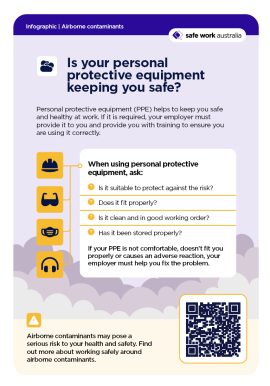
Downloads
Australia is transitioning to the Workplace exposure limits for airborne contaminants (WEL list). Until 1 December 2026, you must still comply with the Workplace exposure standards for airborne contaminants (WES list). Contact your work health and safety regulator for further information.
Infographic content:
Is your personal protective equipment keeping you safe?
Personal protective equipment (PPE) helps to keep you safe and healthy at work. If it is required, your employer must provide it to you and provide you with training to ensure you are using it correctly.
When using personal protective equipment, ask:
- Is it suitable to protect against the risk?
- Does it fit properly?
- Is it clean and in good working order?
- Has it been stored properly?
If your PPE is not comfortable, doesn’t fit you properly or causes an adverse reaction, your employer must help you fix the problem.
Airborne contaminants may pose a serious risk to your health and safety. Find out more about working safely around airborne contaminants.
Additional Resources:
Publication Date:
Last updated:
Publication type:
